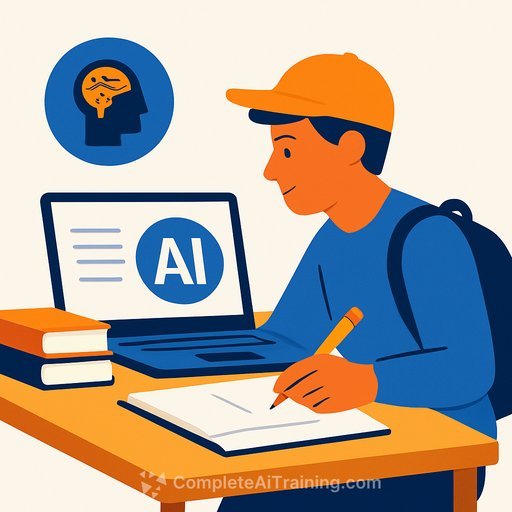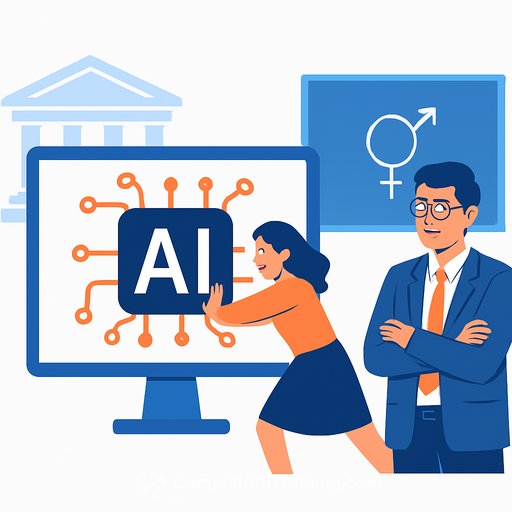AI in the dock: Is generative technology deepening America's education collapse?
National test scores have fallen to historic lows. Barely more than a third of seniors are college-ready, and less than a quarter are proficient in math. COVID-19 widened gaps, but the surge of generative AI has introduced a second disruption that strikes at how students learn, not just what they score.
The crisis is structural. Years of underinvestment, softened standards, and tolerance for mediocrity set the stage. AI made shortcuts cheap and instant-and sped up the slide.
The long decline, accelerated
Educators have watched gradual slippage turn into a drop. Skills are fading, confidence is thinning, and the bridge from K-12 to college and work is unstable. The numbers are a symptom of a deeper problem: students are producing answers without building the thinking that sustains them.
COVID is only half the story
Pandemic disruptions fractured routines and reduced instructional time. The learning loss is real. But the classroom changed again when generative tools became embedded in daily habits. Many students now outsource effort. The grind that builds stamina is replaced by instant output.
How generative AI can hollow out learning
- Illusion of competence: polished responses mask shallow reasoning.
- Process abandonment: fewer reps with feedback, less time in productive struggle.
- Brittle knowledge: poor transfer to novel problems, especially in math and writing.
- Erosion of academic integrity: focus shifts from thinking to turning in.
What the data signals
Recent national assessments confirm what many teachers feel: a broad decline, worst in math and among older students. See national trend summaries from NAEP for context.
The job for educators: keep the tools, restore the process
AI is not going away. The task is to design instruction so that thinking cannot be skipped. Use AI to extend practice, not replace it. Grade the process, not just the product.
Practical moves you can implement this term
- Redesign assessments
- Require oral defenses, whiteboard walkthroughs, and in-class problem solves.
- Make students submit planning notes, drafts, and error analyses as graded artifacts.
- Localize prompts with class data or school context to reduce generic AI answers.
- Use retakes tied to reflection: "What did I think, where was it wrong, what's my fix?"
- Set clear AI use rules
- Define permitted, restricted, and banned uses with examples.
- Require AI disclosures: paste prompts/outputs in an appendix and label what was used.
- Do not rely on detectors for discipline; verify with conferences and process evidence.
- Protect core fluency
- Build no-AI zones for mental math, timed retrieval, and freewriting.
- Increase in-class practice reps with immediate feedback.
- Make AI part of the lesson, not a shortcut
- Allow AI for idea generation, then require students to critique sources and revise by hand.
- Use "think-aloud logs": students annotate how AI output changed their reasoning.
- Run compare-and-fix tasks: students find and correct AI errors with citations.
- Grade for thinking
- Weight reasoning steps, strategy choice, and reflection more than final output.
- Adopt portfolios that show growth across drafts, quizzes, and conferences.
- Build staff capacity
- Offer PD on AI literacy, prompt auditing, and assessment redesign.
- If you need structured options for teams, review Complete AI Training: Courses by Job.
- Equity and access
- Ensure device and bandwidth access for practice that cannot be outsourced.
- Provide offline alternatives and clear supports for students without reliable tech.
What to communicate to families and boards
- We value students who can reason, not just submit.
- AI is a tool; learning is the work. Policies will reflect that.
- Expect more in-class demonstration of skills and more feedback on process.
- We will track progress with low-stakes checks that reflect real skill, not polished output.
Measure what matters
- Frequent, short, no-AI quizzes for core knowledge and writing stamina.
- Oral checks and whiteboard solves to verify independent reasoning.
- Student self-explanations collected over time to show growth.
- Common assessments across courses to benchmark and adjust instruction.
Guardrails that preserve learning
Adopt a simple principle: no assignment should allow students to skip thinking. If AI is used, the student must show their judgment, their steps, and their corrections. This is how we rebuild stamina without banning tools.
Guidance and frameworks
For policy ideas and risk guidance, see UNESCO's work on generative AI in education: UNESCO: Generative AI in Education.
A warning we can't ignore
Falling scores are a siren, not a mystery. COVID exposed weak foundations; AI is exploiting them. With clear rules, process-first grading, and focused practice, schools can protect learning while using new tools wisely. The question is whether we act with enough urgency to do it now.
Your membership also unlocks:






